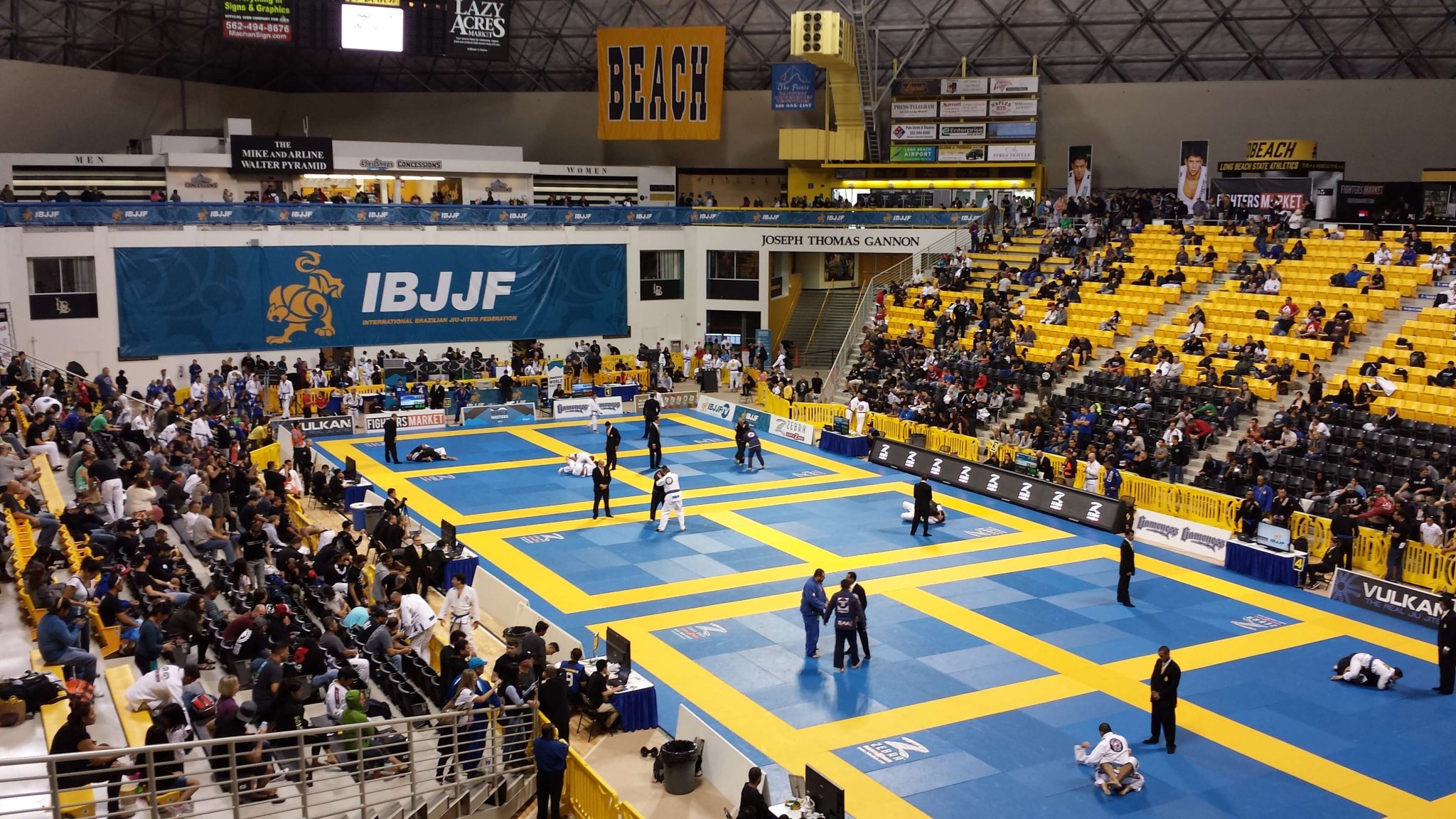- International Brazilian Jiu Jitsu Federation (IBJJF): Considered by many to be the gold standard of jiu-jitsu competition, IBJJF is the only organization universally recognized as having the most competitive “world championship” brackets. If you win IBJJF tournaments there’s a good chance you are a high level competitor. The IBJJF also has some of the most complicated rules. Perhaps the most important aspect of IBJJF competitions that many other circuits do NOT have is the advantage. An advantage is worth less than a point, but it can be a determining factor if the points are equal in a match. The advantage is simply an “almost.” However, because of the nature of the word “almost” the advantage can be viewed as subjective. Another factor that makes the IBJJF contentious to many competitors is their wholesale ban on certain lower body attacks, specifically the heel hook and the “knee reap.” In spite of these points of contention/controversy the IBJJF is without a doubt the most prestigious organization in gi grappling.
- Abu Dhabi Combat Club (ADCC): If the IBJJF is the gold standard in the gi, ADCC is the platinum standard in no gi. ADCC is an invite only tournament that holds trials throughout the world, their cash prizes are generous and their rule set is lauded by many as being one of the best. ADCC’s matches start out with a no points period followed by a points period to allow grappler with a proclivity for submission only to work their game. They also penalize the guard pull which makes things interesting. ADCC allows most submissions except for full nelson and crucifixes oddly enough.
- Eddie Bravo Invitational (EBI): The current gold standard for submission only tournament rule sets, EBI has made a real splash over the past few years. The rule set is simple: 10 minutes of submission only grappling, if there is no submission inside of 10 minutes, overtime rounds start. During overtime, player A starts either on player B’s back or in an arm bar position called “spider web.” Player A must then submit player B. If Player B is able to reach a different position with no submission in place Player B has escape. The situation is then reversed. If Player A submits Player B, Player B must then submit Player A in a shorter period of time to win. This can be repeated, but after the allotted number of repetitions a winner is chosen based on fastest escape time. This tournament format has been growing in popularity because of the high likelihood that the spectator gets to see a submission occur.
- Grappling Industries: Grappling Industries I another “non professional” organization, like the IBJJF, in that they don’t pay their competitors/winners. Grappling industries has recently set themselves apart both by expanding their tournament circuit to include most of the USA along with events in Canada and Australia, and by having an innovative rule set. Grappling Industries is unlike most other competition circuits because it allows a lot more submissions and positions in the gi than other tournaments do, including reaping and neck cranks for brown and black belts. The only thing you can’t do at the brown and black belt is heel hook. Grappling Industries also has made good use of the round robin format, allowing competitors who lose a round to still potentially win the bracket by collecting points for submitting their opponents.
- Fight To Win Pro: Fight To Win (F2W) Pro is different from the other events on this list because instead of being some sort of tournament format, F2W Pro offers competitors an opportunity to compete in a 1 off match, similar to what you’d see at an MMA event. F2W Pro also is different in that it sells itself as submission only but if no submission occurs inside of the match time, three judges render a decision based on submission attempts that occurred during the match. This has resulted in some controversial decisions. Also, unlike most competition formats F2W Pro allows (encourages) slams. Many consider this circuit to be the best opportunity for up and coming competitors to have a stage to showcase their skills.
These are just 5 of the major competition circuits. Most competition formats right now follow either the IBJJF or the ADCC format, with fewer following the EBI or F2W formats. There are also organizations coming up that are trying to establish their own rules and formats like Kasai and Quintet to name a couple. What is YOUR favorite competition circuit?

Emil Fischer is a Jiu-jitsu Black Belt and BJJ competitor training under Pablo Angel Castro III at Strong Style MMA in Cleveland Ohio. An avid writer and competitor, Emil has amassed an extensive competition record. Most notably, Emil is a 2 time gold medalist at the IBJJF No Gi Pans, and has a submission victory record of 5-1 at Fight To Win Pro which includes purple belt no-gi light heavyweight championship
Emil’s sponsors are Impact Mouthguards, Cleveland Cryo, The Terphouse, Meerkatsu, Eddys on Coventry and Nottarookie. He is a Ludwig Van and Vanguard Kimono brand ambassador.

